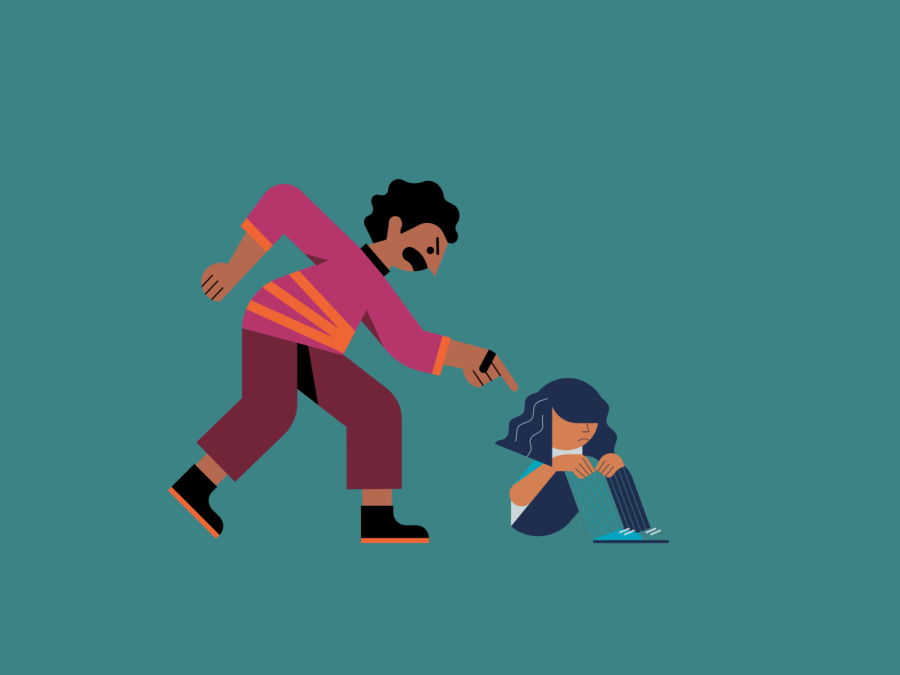Recognizing signs of child abuse
People frequently only consider child abuse as abuse if violent. Most do not know that child abuse comes in different forms from different types of people. Child abuse varies in types like verbal, sexual, physical, emotional and more. “Honestly when I was younger I thought that the only ‘abuse’ was physical. That’s what they always taught me in school. I never really realized that there were so many types of it until I watched some shows and movies. I wish I knew more about abuse when I was little because I feel like I would have been able to recognize some signs in my friends,” freshman Jack McKain said.
March 11, 2022
Child abuse impacts why children grow up “troubled”, and may show developmental disorder symptoms. According to dosomething.org, one in seven children has experienced child abuse in 2020. About five children die every day because of child abuse. A surviving victim of child abuse most likely will remember their situation as one of the most traumatizing situations of their lives.
Physical child abuse and abuse, in general, lead to a variety of short-term and long-term effects. Physically abusing someone can lead to a multitude of permanent scars and marks on one’s body that cannot heal if not brought to the attention of a doctor. This usually cannot happen since the majority of abuse victims or bystanders do not report cases.
Although parents or guardians sometimes physically abuse their children, usually a close friend or family member abuses the child. Victims suffer in silence because they feel as though they cannot speak up about the situation with their parents or guardians if abused by a relative. Sexual abuse remains one of the main types of abuse done to children.
Sexual abuse statistically happens to females more than males. Women make up 82% of all sexually assaulted victims. 1 in 9 girls and 1 in 53 boys under the age of 18, experienced sexual abuse or assault by an adult. Of all sexually assaulted victims, two out of three lie between the ages of 12 and 17.
Television and film usually represent awareness of abuse more than schools. Typically, schools forget to spread awareness because of the age differences and maturity levels between students in middle school, to high school. Unfortunately, in most cases of a tragedy happening, only then will the school begin to show awareness to a certain cause and start using that tragedy as an awakening. Schools even hire a human resource specialist to help the employees and staff know of the right and wrong towards each other and children but do not hold any special seminars or lessons for children. Some do not even demonstrate hotlines to call in case of known child abuse.
“I think it is kind of weird that high school doesn’t really have any of those important seminars that they used to give in elementary and middle school. It’s like they just forgot that people have problems and now all they wanna do is make sure their students know that they’ll get in trouble if they smoke at school. I genuinely wonder why they don’t even remind students that they have resources anymore,” freshman Neneh Bah said.
In schools, teachers, staff and employees legally must report any suspicion of child abuse to a superior. The pandemic impacted the recognition of child abuse because of the ability to not see a child in person and not seeing signs of abuse. The school remains a safe place for a multitude of abused children. In the U.S., students generally spent six to seven in schools. This allows children who struggle with abuse at home to stay away and potentially feel safe away from the situation.
Child abuse can lead a child to change their beliefs on the world and change the ways they once acted. Abuse regularly leads to damaged mental health. Mental health builds throughout childhood with young experiences and thoughts. When a child’s integrity starts to change, especially at a young age, their current and future mindset will potentially alter early. Abuse can lead to PTSD, ADHD, anxiety, and depression. These conditions typically lead to academic failure or struggles and they also lead children to maintain troublesome qualities like substance abuse and violence. Recognizing signs in child abuse remains the main key to helping a child who does not have any outlets to express a bad situation. Helping one kid might help free others.







